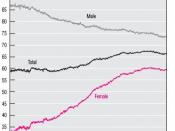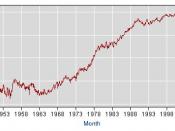Economists look at the employment trends and break them down into different components. The breakdowns can then be looked at on a time line form the past to the present. It is important to look at employment trends as they can remind us of what has happened in the past, help us understand what we are currently experiencing and let us better prepare for future employment trends.
Baby boomers were a big part of a past employment trend. In the war and post war times, the women stayed home to look after the children while the men worked to support the family. As the Baby Boomers entered the job market so did a number of their mothers. Between 1966 and 1991 there was approximately a 25% increase in participation by women aged 25 years and older. As the participation rate of women increases, the rate of men decreases. It is the women who helped to increase the participation rate so greatly.
A recent trend is increase in the number of people working in the service sector, from 43.9% in 1951 to 72.2% in 1990. In sharp contrast the workers in the goods-producing sector has decreased at nearly the same rate during the same period.
Agriculture's share of the workforce has decreased most significantly, while construction is the only industry to keeps its proportion of the workforce.
One of the most obvious future trends is the aging population. It is estimated that by the year 2000, 4 million Canadians will be seniors. This not only impacts the number of workers but also changes the demands of production. Foods from their childhood's are reintroduced to bring back memories of their youth. Clothing wants created marketing success with products like "Relaxed fit"� jeans, walking shoes are a huge hit and flat shoes are...


